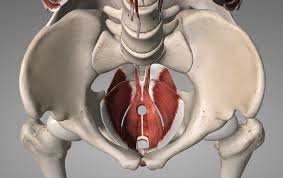Better Than Kegels
Let’s talk about your pelvic floor. Man or woman, expecting or postpartum, underweight or overweight, active or not — you have a pelvic floor and it is always working.
Your pelvic floor muscles support your bladder, your bowels, and your uterus, and are important urinating, bowel movements, and sex. They also stabilize your pelvis and lower back.
Why does this matter to you? Painful sex, incontinence, low back pain, hip instability… all of these problems can stem from your pelvic floor, which can become either too weak or too tight during/after pregnancy, due to constipation or straining, or with significant weight gain.
I’m sure you’ve heard of kegels as the main pelvic floor exercise, and for what they’re worth, kegels are a great exercise that do help to increase pelvic floor activation and strength. HOWEVER, kegels are not the end all or even the best exercise to target your pelvic floor, and may actually be worsening a pelvic floor that’s too tight.
A study in 2016 released by the American Journal of OBGYN lists out the best exercises for strengthening your pelvic floor muscles (and the surrounding, supporting muscles that help them to function correctly) by percentage of PF muscle activation. All of these exercises will strengthen your pelvic floor more than a kegel will, and they’ve got additional benefit to mobility and stability to boot.
If your goal is to increase stability at your deep core and strengthen the tiny muscles that give you major support, here’s your sign to get going with some of the exercises!
Email me at dominique@intentionalmobility.com or follow me on instagram @intentionalmobility for more pelvic floor, core, and whole body strenghtening, mobility, and stability tips - as well as miniworkouts to start your day strong.


